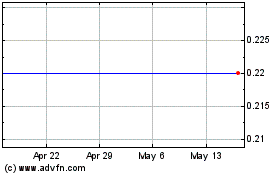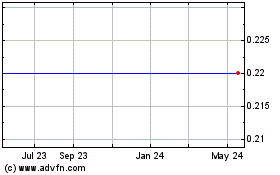Endologix® Inc. (Nasdaq: ELGX) (“Endologix” or the “Company”), a
developer and marketer of innovative treatments for aortic
disorders, today announced that a correction notice has been issued
for the Ovation iX system, that identifies the root cause of
polymer leaks. This voluntary action has been classified by the FDA
as a Class 1 recall. No physical product removal of the product is
planned or needed.
Correction Z-2263-2020 was issued in May 2020 to current users
of the Ovation iX system and informs users of a material weakness
adjacent to the polymer fill channel that may become compromised
during pressurization with liquid polymer. The clinical sequelae
associated with polymer leaks may be systemic or aneurysm related.
All lots/serial numbers, not yet implanted, of the following models
are in the scope of the correction:
U.S. Model Numbers
EU Model Numbers
Rest of World Model Numbers
TV-AB2080-J, TV-AB2380-J, TV-AB2680-J,
TV-AB2980-J, TV-AB3480-J
TV-AB2080-I, TV-AB2380-I, TV-AB2680-I,
TV-AB2980-I, TV-AB3480-I
TV-AB2080-J, TV-AB2380-J, TV-AB2680-J,
TV-AB2980-J, TV-AB3480-J, TV-AB2080-I, TV-AB2380-I, TV-AB2680-I,
TV-AB2980-I, TV-AB3480-I
In addition to new information as to the root cause of leaks,
the May 2020 correction notice also contained information regarding
the incidence of aneurysm related complications and the lack of
long-term sequelae following underfilling of the polymer rings
caused by a polymer leak.
The lifetime present rates of systemic clinical harms are
tabulated below. These rates are based on voluntary complaint
reporting and units sold, which may underestimate the true rate on
a per-patient basis and contain less information than would be
typical of an analysis from a clinical trial, as such some data are
incomplete. The May 2020 analysis uses a different methodology than
was previously used in the 2018 and 2020 correction notices, where
the most severe systemic clinical harm was presented for each
patient and, therefore, the number of clinical harms was equal to
the number of patients.
In contrast, the analysis for the May 2020 correction notice
(shown below) includes more than one clinical harm per patient, if
reported; therefore, the number of clinical harms exceeds the
number of patients, meaning these data are not directly comparable
with those presented in previous correction notices.
Systemic Response to Polymer
Leak
Current lifetime rate (31
August 2015 to 29 May 2020)
Lifetime rate of August 2018
when prior FSN was issued (31 August 2015 to 30 June 2018)
Death (quantity events)
0.04%
(5/12763)
0.04%
(3/7285)
Multi-organ failure1, cardiac arrest,
neurological complication2 (quantity events)
0.11%
(14/12763)
0.12%
(9/7285)
Local tissue necrosis3 (quantity
events)
0.12%
(15/12763)
0.12%
(9/7285)
Prolonged hemodynamic instability4
(quantity events)
0.16%
(20/12763)
0.16%
(12/7285)
Transient hemodynamic instability
(quantity events)
0.71%
(91/12763)
0.48%
(35/7285)
Spinal cord infarct (quantity events)
0.01%
(1/12763)
0.01%
(1/7285)
Total patients with an event
0.88%
(112/12763)
0.65%
(47/7285)
1Includes dialysis, prolonged cardiac support, or liver failure;
2Includes stroke; 3Includes rash/skin necrosis (observed on the
posterior lumbar area), muscle necrosis (para-spinal and in the
lower limbs following an occurrence of compartment syndrome),
renal, GI and lower limb ischemia. 4Includes >24 hour critical
care support.
Two periprocedural patient deaths reported in the table occurred
following complications after a polymer leak. One patient had an
access site complication and one patient had an ischemic limb. It
is difficult to establish to what degree the polymer leaks may have
contributed to these deaths. Both are reported here for
completeness.
Figures in parentheses refer to the number of complaints
received for each individual patient response and the total
bifurcate units sold since product commercialization
In addition to the systemic complications, 33 (0.27%) patients
required an intervention for a Type 1a endoleak associated with a
polymer leak and 9 (0.07%) patients required an iliac limb
intervention due to underfilling of the polymer channel associated
with a polymer leak.
“Endologix is committed to replacing Ovation iX with the
recently FDA-approved ALTO graft by the end of October 2020. ALTO
is technically easier to implant and has been designed to improve
acute outcomes, while retaining the unique durability of the
Ovation platform,” commented John Onopchenko, Chief Executive
Officer of Endologix. “Importantly, ALTO incorporates design and
manufacturing changes that are intended to eliminate the areas of
material weakness associated with polymer leaks. We believe ALTO
should meaningfully reduce the incidence of polymer leaks. We look
forward to receiving approval for ALTO in the EU, where the graft
is in the final stages of CE Marking review.”
“Ovation iX is differentiated from traditional devices for
endovascular aneurysm repair (EVAR) through the use of liquid
polymer. This technology presents many advantages, including its
low-profile graft design with a durable, customized, anatomically
adaptive aortic seal. However, it also presents the potential
disadvantage of polymer leaks, as addressed in our recent safety
communication,” said Matt Thompson, MD, Chief Medical Officer at
Endologix. “In the transition to ALTO, physicians may be
considering when to select Ovation iX for their patients given the
root cause of polymer leaks. Certain patient cohorts, including
women, patients with challenging access, patients needing
fast-track EVAR, and patients with poor predicted durability using
traditional EVAR grafts, may derive incremental clinical benefit
from the design features of Ovation iX, as established by existing
clinical evidence.”
To clarify the decision-making process, Endologix has updated
the labelling of the Ovation iX platform with the following
warning: “Polymer leaks are a unique potential risk of the Ovation
iX device platform that have been reported post-market. The
complications of polymer leakage into the vasculature have ranged
from transient hypotension to severe life-threatening anaphylactoid
reactions, tissue necrosis and death. When polymer leaks occur,
underfilling of the Ovation iX sealing rings have led to
intraoperative Type Ia endoleaks and iliac limb complications that
have required additional therapy. The risk of polymer leak should
be carefully considered along with the risks associated with
alternative treatment options when making personalized treatment
decisions for those individuals who fall within the indicated
patient population as defined by the Instructions for Use.”
Consumers and physicians with questions may contact the Company
via telephone at +1 800-983-2284. or via e-mail at
customerservice@endologix.com
Adverse reactions or quality problems experienced with the use
of this product may be reported to the FDA's MedWatch Adverse Event
Reporting program either online, by regular mail or by fax:
- Complete and submit the report Online:
www.fda.gov/medwatch/report.htm
- Regular Mail or Fax: Download form
http://www.fda.gov/MedWatch/getforms.htm or call +1 800-332-1088 to
request a reporting form, then complete and return to the address
on the pre-addressed form, or submit by fax to 1-800-FDA-0178.
View source
version on businesswire.com: https://www.businesswire.com/news/home/20200615005750/en/
INVESTOR CONTACT: Endologix, Inc. Vaseem Mahboob, CFO (949)
595-7200
Endologix (NASDAQ:ELGX)
Historical Stock Chart
From Feb 2025 to Mar 2025

Endologix (NASDAQ:ELGX)
Historical Stock Chart
From Mar 2024 to Mar 2025
